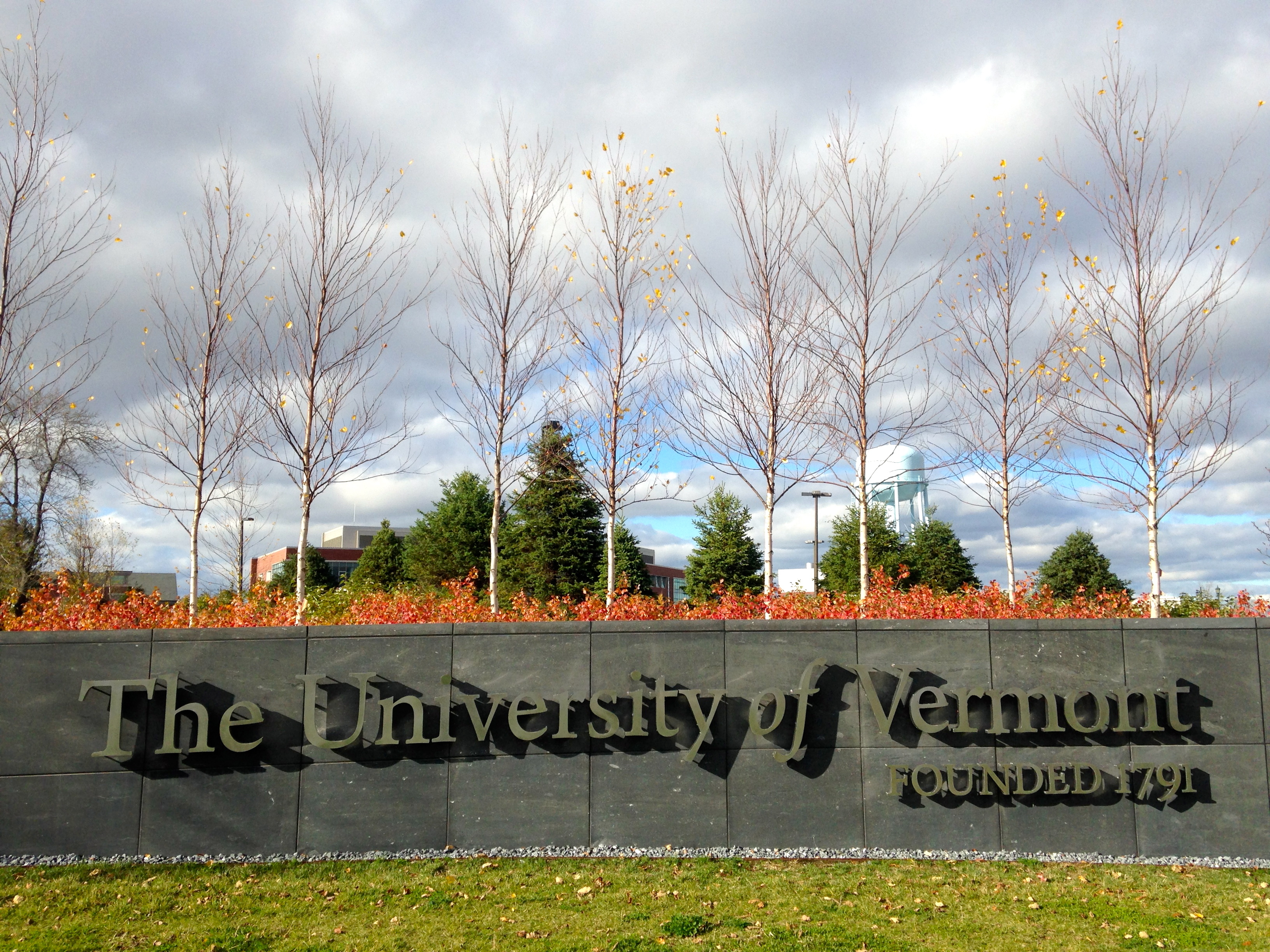White Spruce : Overview

You can see the fairly new plantings of white spruce (the coniferous, evergreen trees) behind The University of Vermont sign. (Cecilia Baker, November 3, 2014)
By Cecilia Baker
I fondly remember my eighth grade science teacher making white spruce tea for our class. She told us it was a great source of vitamin C, but to never drink it if pregnant because it can cause abortions. This tree has stuck with me throughout the years because of this middle school experience.
Many know the white spruce as their common Christmas tree, but it was much more than that to northern Native American tribes, such as the Algonquin, Cree and Eskimo. This tree was a staple to their daily lives, providing them with means for shelter, fuel, food and medicinal purposes. Today, we enjoy its shape for its ornamental values and its lumber for general construction and pulpwood. This evergreen, coniferous tree is found in northern regions of North America. According to the University of Vermont tree inventory, young white spruces were recently planted on Main Street behind the university sign. This shows what an asset the white spruce is to our beautiful tree campus.
“The heart of the region’s greatest stand of spruce is found where the climate is cold, the lakes are large and deep, and the topography is rough and mountainous.” (Connor, S., 181)
